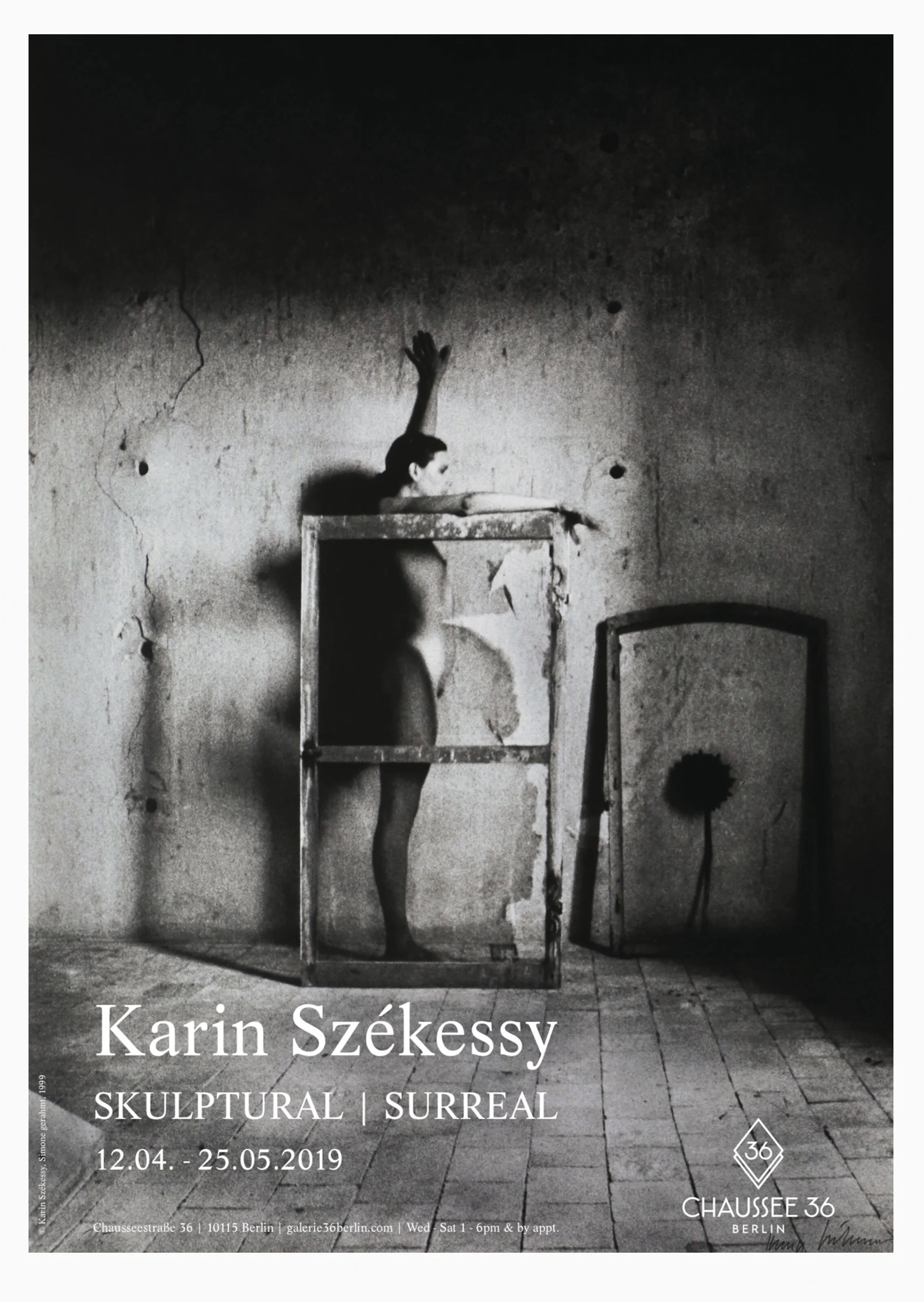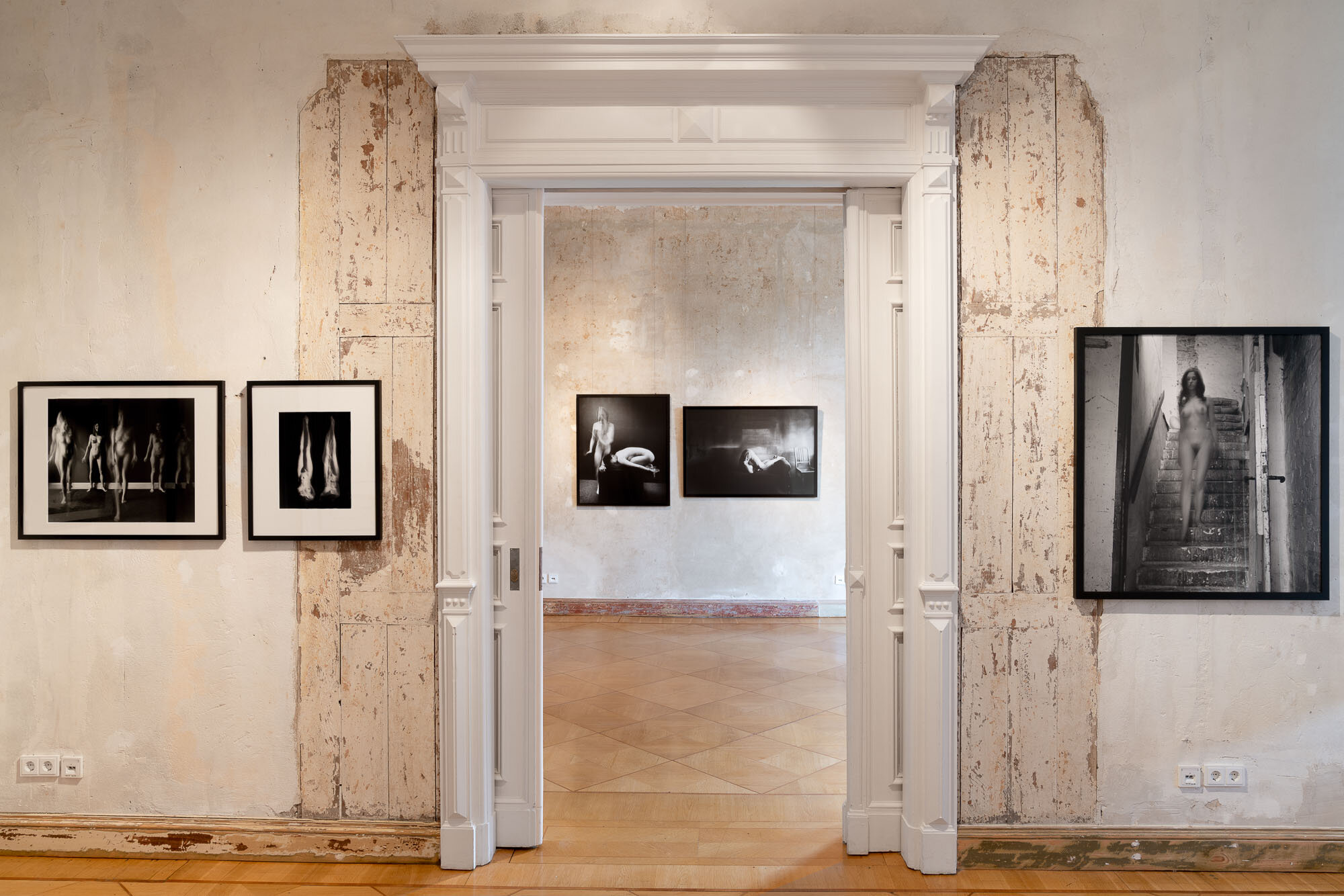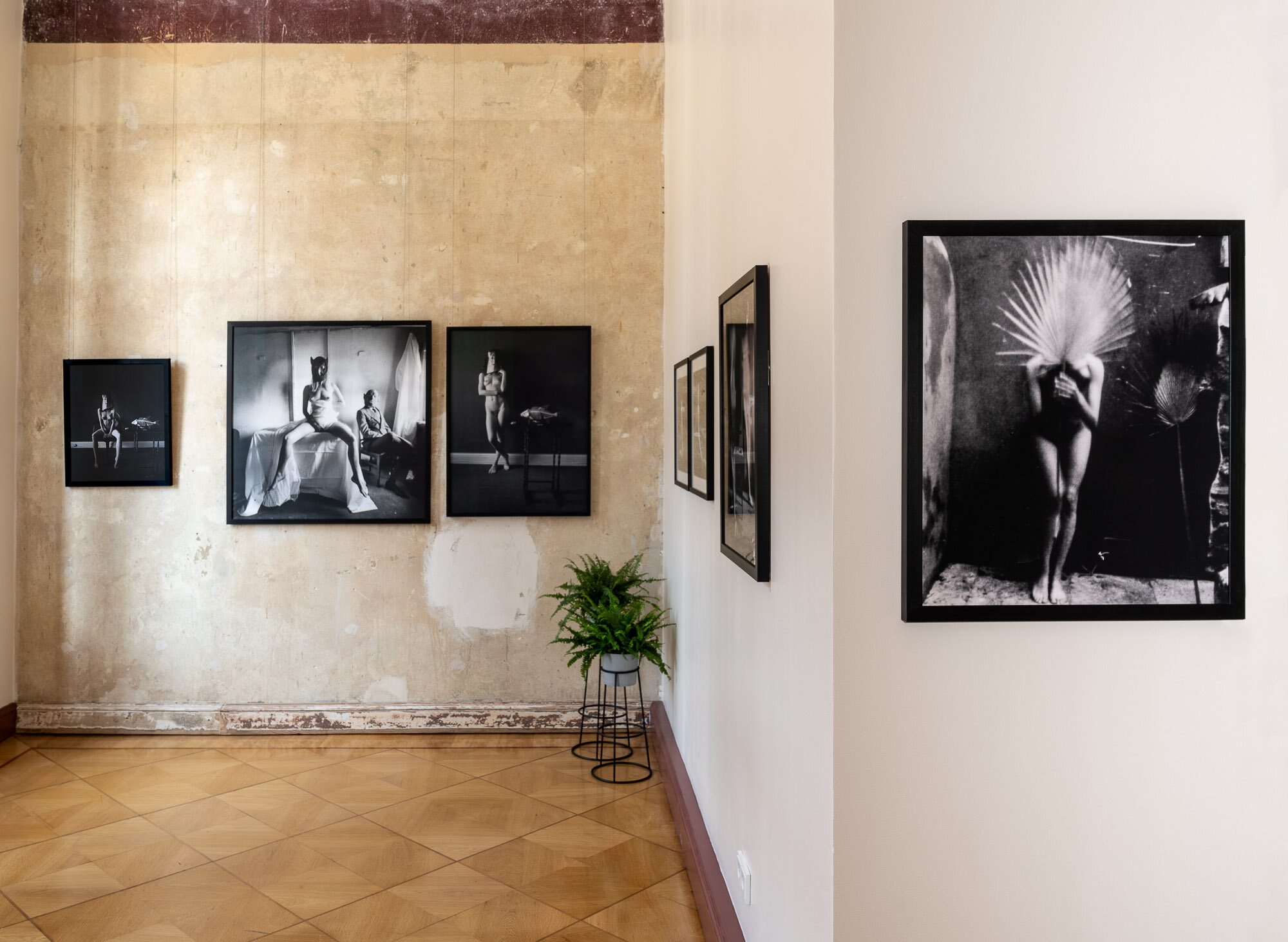Karin Székessy
— Skulptural / Surreal
April 12th - May 25th, 2019
Karin Székessy is one of the most important women photographers in Europe since the 1960s. In collaboration with her husband, the painter, graphic designer and sculptor Paul Wunderlich, she developed a distinctive photographic style, deeply rooted in myth and the history of art. In addition to portraits, landscapes, still-lifes and photojournalism, it was Karin Székessy’s nude photographs that brought her international repute. Today, they are considered classics, and are represented in many major collections.
No one before had ever photographed furniture like Karin Székessy. Two of these advertising photographs can be seen in the adjacent exhibition, Women on View at Chaussee 36. “An almost subversive assault on our optic nerves,” is author Welfhard Kraiker’s description of these pictures. Furniture remains an important object, even in her later nudes. The photographer endows it with a life of its own in surreal compositions. In her photographic stage settings, the pieces of furniture seem like sculptures. In their interplay with women’s naked bodies, personal stories are subtly related, in which an almost archaic atmosphere prevails, where the actresses are unperturbed by monsters.
It has been said of Karin Székessy’s nude photographs that she brings a woman’s eye to the subject. This makes such an attempt at a fresh view all the more compelling – especially against the backdrop of a perception of the female body still essentially masculine and the current reception and awareness of these attitudes. Székessy’s naked women seem less denuded and less voyeuristically charged. In the foreground of her nudes is a more self-confident woman’s perception. These women seem free, modest and almost unremarkable – they thereby become more untouchable, though this does not mean that Eros is absent, as was asserted at the time in the text accompanying her exhibition in Berlin’s Werner Kunze gallery.
Karin Székessy began taking photographs in 1954. She rapidly developed her own distinctive, surreal style in staged, photographic images with an air of mystery. Perhaps it is her sculptor’s eye that lends these bodies their self-assured presence. Karin Székessy’s photographs seem almost to have been carved by the camera. The play of light gives form to the mostly unclothed women’s bodies – outlines become sculptural shapes and generate a magical, surreal atmosphere. Székessy herself says about this: “It is important that the models understand the absurdity of my work.” At the very first glance, symbolic elements intensify enigmatic scenarios with masks and other cryptic props. She invents pictures and challenges us to think them out. Székessy’s pictorial metaphors are discreet and, in a distant, almost fleeting, yet highly personal way, evoke yearning and longings, but also ephemeral beauty. They are for the most part tranquil works, in which the relationship of the photographer to her models can be sensed. They do not have perfect bodies, so that their beauty is all the more natural. “I photograph women’s bodies and direct them so that they are beautiful,” says the photographer, adding that she also mirrors herself in them. These staged pictures become a species of self-portrait.
Staging is important to Karin Székessy. The artist has an eye for spatial composition and has mastered the techniques of photography. The philosopher and author Max Bense has written: “We are not dealing here with the photographic immobilization of a pre-existing world, but with the representation of a world intentionally fashioned, arranged like statuary, in which not even the lighted space is a natural phenomenon, but has its source in manipulation, in its malleability, in illumination.” With her distinctive compositions of surreal picture puzzles, in which pieces of furniture take on the appearance of sculptural objects, well-nigh theatrical scenes come into being, leading us into unsuspected worlds where shape and form melt into the shadows and almost vanish. This moment of absence lends Székessy’s photographs a magical, even surreal, sensual feeling of hidden poetry. (Text Harald Theiss)
Exhibition curated by Alice Le Campion and Harald Theiss for Chaussee 36, Berlin.
Installation views, Chaussee 36, 2019




